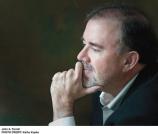Clarence Darrow: Attorney for the Damned
Review
Clarence Darrow: Attorney for the Damned
It's a high honor for a product name to be "genericized." A lot of people call copy machines Xerox machines, tissues are Kleenex, and all gelatins are Jell-O. In the post-World War II generation, many skilled advocates were complimented by being identified as "regular Clarence Darrows." The comparison served as recognition of a man whose career and accomplishments in American courthouses still resonate in the annals and history of the law.
John Farrell's biography is a well-written account of a great lawyer and an effective summation of Darrow's story.
CLARENCE DARROW: ATTORNEY FOR THE DAMNED is a new biography of one of the greatest courtroom advocates in history. Darrow began his legal career as a representative of big business, representing railroads and defending claims of injured workers. In his mid-30s, after a move from Ohio to Chicago, Darrow became a defender of the downtrodden. It was his work supporting the working man in his battle against oppression and government control that caused muckraker Lincoln Steffens to dub Darrow "the attorney for the damned." Darrow accepted the title when he published his autobiography, and the name also was used by Arthur Weinberg for a biography published in 1959.
Taking advantage of newly found primary sources, author John A. Farrell has done more than rehash Darrow's life. After his aforementioned work for railroads, the second phase of his career focused on capital punishment. Darrow became a vigorous opponent of the death penalty. While his first client was sentenced to hang, Darrow would successfully fight in countless cases to avoid the ultimate penalty. His writings and arguments on this issue still resonate in the current debate.
Darrow gained national attention travelling the country defending union leaders charged with murder, conspiracy and other crimes. He secured acquittals for important leaders in the trade union movement. In California, he represented John and Joseph McNamara, who were charged with murder in the bombing of the Los Angeles Times building. While he kept the brothers off death row, his success led the court to accuse him of jury tampering. The criminal charges nearly destroyed Darrow both personally and professionally, but he was able to recover and would eventually take on the two cases that would define his legacy in the courts.
His defense of Richard Loeb and Nathan Leopold, the kidnappers and murderers of young Bobby Franks, was successful in sparing them the death penalty. The second case, the Scopes Monkey trial in tiny Dayton, Tennessee, confronted another issue dear to Darrow's heart. Scopes was charged with teaching evolution in a public school, a violation of a Tennessee statute. Darrow, the agnostic, cross-examined William Jennings Bryan on the Bible and essentially destroyed the arguments of those demanding that scientific advancements could not be squared with Biblical teachings. The Scopes trial was a charade, but for Darrow, the battle between science and religion was important.
Darrow was a rumpled man who relied on his oratorical skills to convince the courts of the just nature of his causes. He had his flaws but never backed down from the fight for justice. John Farrell's biography is a well-written account of a great lawyer and an effective summation of Darrow's story.
Reviewed by Stuart Shiffman on June 28, 2011
Clarence Darrow: Attorney for the Damned
- Publication Date: May 1, 2012
- Genres: Biography, Nonfiction
- Paperback: 592 pages
- Publisher: Vintage
- ISBN-10: 0767927591
- ISBN-13: 9780767927598





